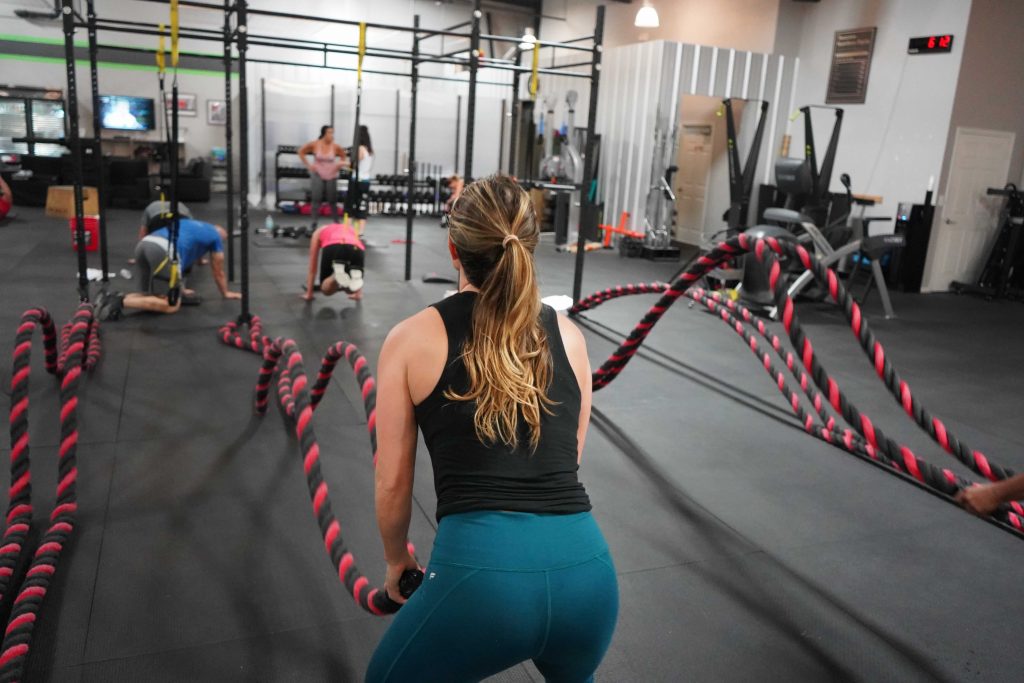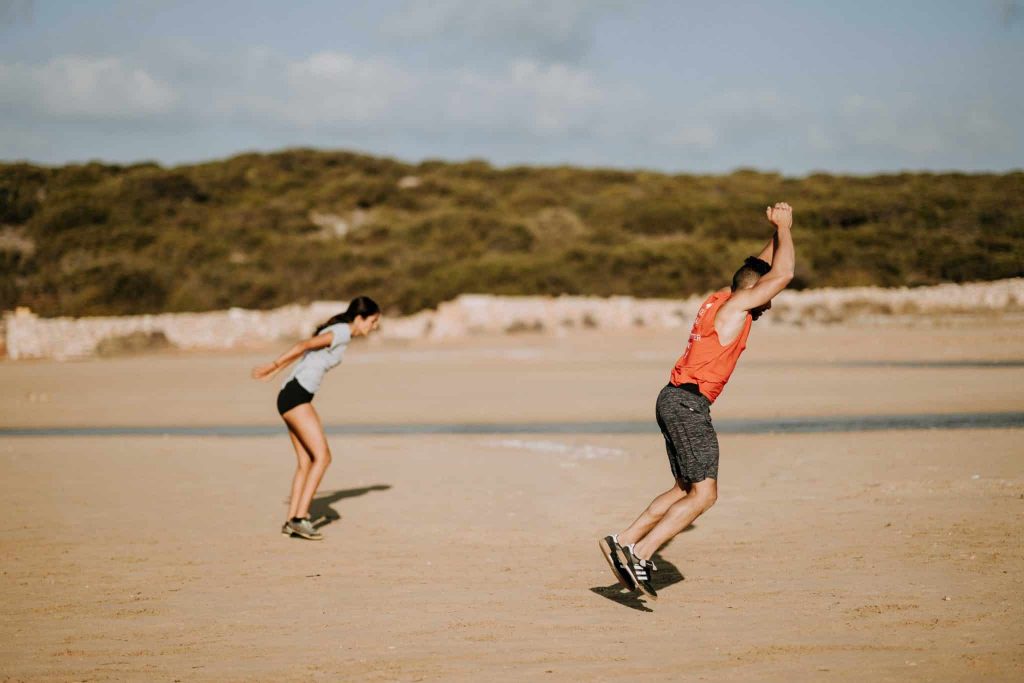We as a society are probably more obsessed with movement than any other in the history of the world. I believe this is largely because we are also the generation who does the least amount of it in comparison to any other before us. Most of us are also bombarded day in and day out by “Rock Hard Abs in Just 5 Minutes A Day” and “Two Weeks To Your Beach Booty”, which brings me to the second reason I believe we worship at the altar of movement so, vanity. This leaves us with somewhat of a conundrum as most of us spend 40 hours per week crammed into the latest “ergonomic” chair behind a desk which we don’t leave for hours at a time. In this article, I would like to bust some myths about movement. Lies we’ve been told by professionals trying to sell a product and some that we tell ourselves to make ourselves feel better.

All kinds of movement are good for everyone
Who here has ever been to a yoga class and pulled a muscle or walked out with a tweaked back or a headache. Hands up if you’ve ever heard of someone with a labral tear or herniated disc from Crossfit. Maybe you thought you’d take up running and it started off well but now you’ve been getting ITB within 5 kms. The reason for this is usually quite simple. Too much too soon. Asking a body that is conditioned by hours a day of exercise to perform the moves you see on Instagram is one thing. Asking a desk-bound, de-activated core to play a game of touch rugby on the weekend is likely to land you in the Chiropractors office because your body is dysfunctional and weak from a life spent stationary. The moral of the story is this: Our bodies are capable of incredible feats. They can run mountains, swim oceans, lift cars and pull busses but Rome wasn’t built in a day and if we fail to properly care for and prepare our bodies they will fail us.
Exercise vs. movement
We have been conditioned by marketing and media that the only way to exercise is to have an expensive gym contract that allows us access to the latest and greatest equipment. The truth is many of these devices are designed with one specific movement in mind, making them very one dimensional and unlikely to help you get fit for life. Luckily there seems to be a shift within the fitness industry towards “functional fitness”, a concept which sees us using very simple equipment or even just our bodies to MOVE and not EXERCISE, which helps us create healthy movement patterns lost by our sedentary lifestyles and ultimately making us stronger and less prone to injury.

If it hurts, it needs to be rested
Whilst this is true in the early stages of an acute injury such as a fracture or muscle/ligament tear, most of the chronic pain we feel is the result of dysfunctional movement patterns developed over a lifetime of poor habits and posture. The solution is developing healthy movement patterns by eliminating compensation: firstly, by getting our bodies’ structure corrected by a Chiropractor and then correcting muscle imbalances with a functional movement routine.
Movement is about muscles
Whilst muscles are the engines that drive movement they are not the only component involved. In fact, they’re not even the most important component. Before you can carry out a movement your brain will decide what movement it wants to perform, it then calculates exactly how it is going to carry that movement out and within a split second it relays that staggeringly complex information via hundreds of thousands of nerve fibres, housed and protected within the spine, to not one but many muscles, telling some to contract, some to relax and some to simply maintain their current level of tension in order to stabilize. These muscles attach to a lever or BONE via tendons and by contracting, move it in a specific direction, around an axis determined by the shape of a joint or joints, which are further stabilized by ligaments and fibrous capsules. Both of which are richly innervated structures that constantly send and receive information to and from the brain about the joint position, stability and the quality of the movement allowing it to make micro-adjustments via the muscles. Then there is the cartilage which acts as a cushion and, together with synovial fluid, serves to provide a frictionless surface between two bones. So you see, without all the other parts working together in unison, each doing their job flawlessly a muscle is nothing more than a piece of steak, only good for one thing.

No Pain No Gain
We as a society have lost touch with our bodies. We force them into submission by pushing through the pain and silencing that small voice that says “This is not good for me” with some cheesy one-liner like ‘pain is temporary but glory is forever’. The truth is our body will whisper to us and if ignored it will begin to shout. Sadly this is when most people start looking to the Chiropractor for a “cure”.
A weekend gym session to make up for sitting all week.
Our bodies develop patterns based on repetition. Things we do consistently day in and day out make up our lifestyle. A lifestyle of abuse during the week is not redeemed by a 1-hour session at the gym on Saturday and Sunday. Positive change comes from the daily habits we form such as the chair we sit in, the shoes we wear, our sleep habits. If you have a desk job, try and alternate sitting and standing every hour or so (converting your work station to a standing one is fairly simple these days) or simply get up and move for five minutes by doing some squats or even getting coffee or going to the bathroom (if a smoker can do it, so can you). Still, go to the gym on the weekend but leave your ego at home and do things that help your body function better and the aesthetics will follow.

Correcting bad movement patterns with exercise
This is a great way to further stress your body out. Throughout our lives, our bodies experience stress on a daily basis which can lead to the development of injuries or structural abnormalities that our body is incapable self-correcting. It then has to compensate around these “micro-injuries” creating weak spots in your chassis. To continue the car metaphor, a car is meant to be able to drive from Cape Town to Durban no problem but if that car has bad wheel alignment it’s going to run into problems. Now it may not be on that trip but sooner rather than later, the tires are going to be worn out or a shock is going to have to be replaced or you’ll begin to notice a rattle. The body is the same. It is designed to move and articulate but if it’s structure is compromised it starts to develop inflammation and tissue starts to decay if not corrected.
Chiropractors trained in Advanced BioStructural Correction™ are equipped to help your body undo those compensations by correcting those structural abnormalities your body can’t self-correct, allowing your movement to be more efficient and effective.
When our egos are involved our bodies will always suffer the consequences. Love and respect your body enough to move it in ways and at intervals that enable it to serve you well and it will continue to do so for a very long time. Neglect to do so and you will find your limits long before you reach your destination.
Yours in Health
Dr Thorn
Read more: 9 Reasons Athletes Need a Chiropractor
Peak Chiropractic Centre located in Claremont are family-friendly chiropractors focused on relieving aches, pains and posture correction. We offer in-house X-Ray facilities.


